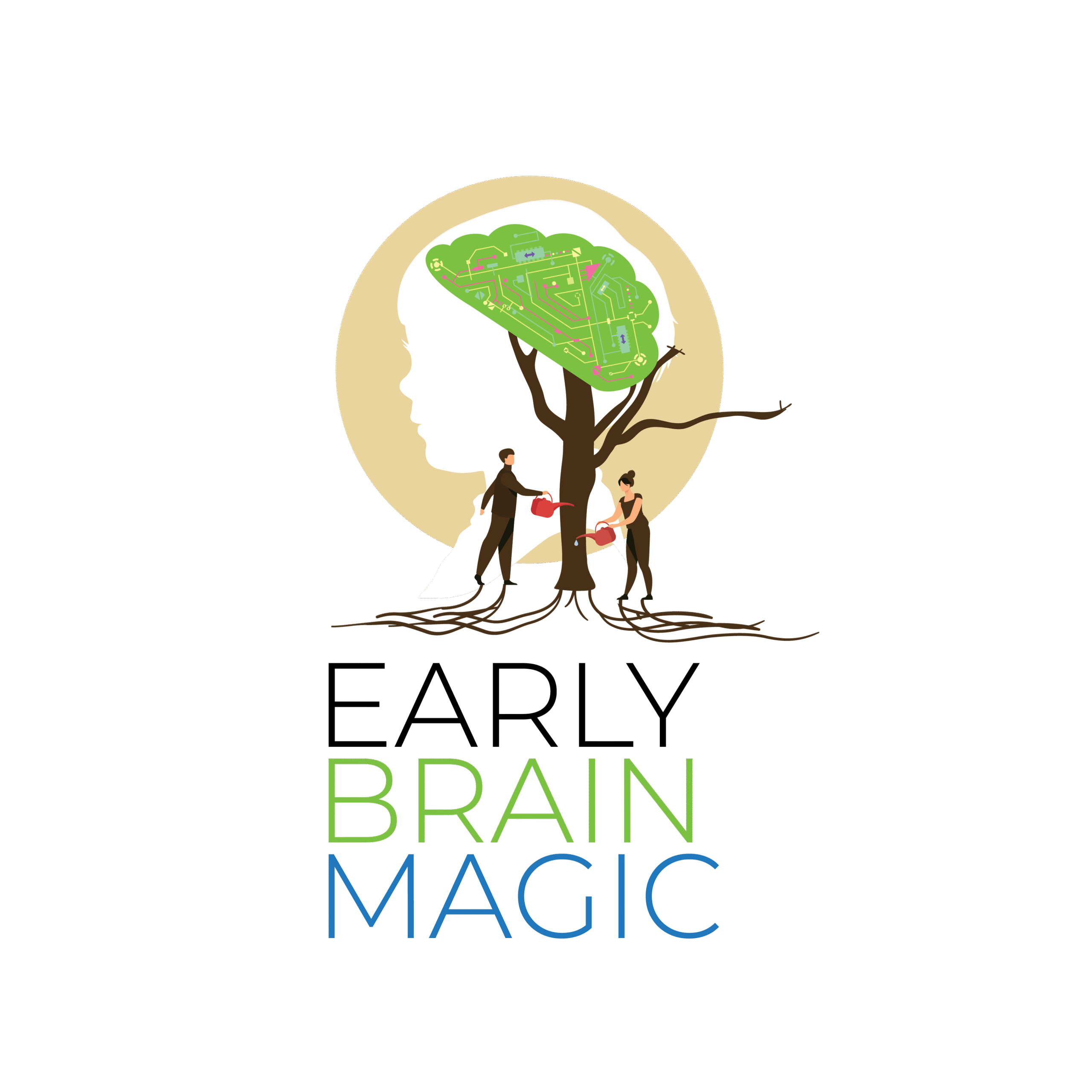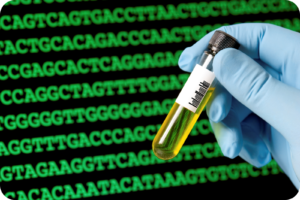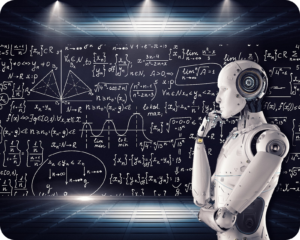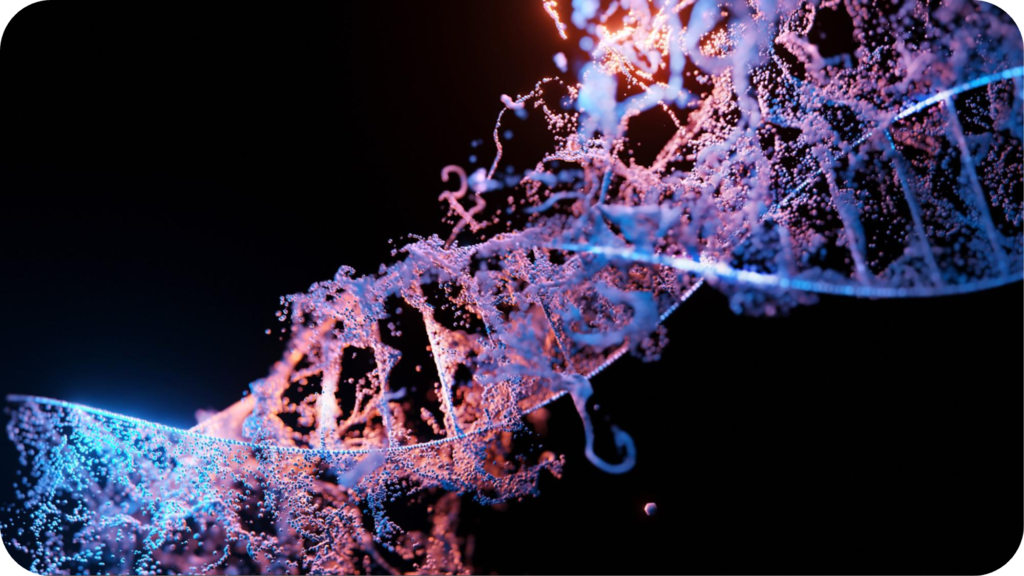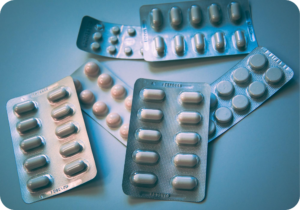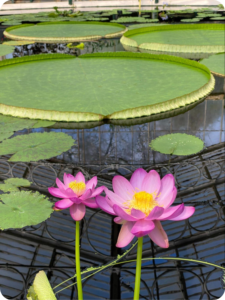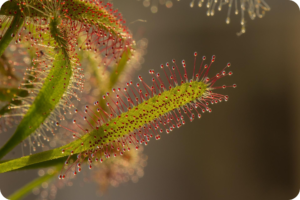EBM Articles
Medicine in the right amount and for the right person is a boon for the person. Inventing or discovering medicine for the welfare of humans is not an easy task. Sometimes to make medicine we need to change the natural structure of the components.
In the human body, protein is an important molecule that plays a crucial and various role, change in protein structure is important for the smooth functioning of the protein. Scientists also try to change the structure of the protein to get the required result, but for the last fifty years, scientists have been facing problems in this process.
First to understand the problem we need to understand protein and its importance.
Fun Questions
- Write the full form of AI.
- Draw a picture of a favourite AI tool.
- Write three things that you enjoy with the help of AI.
- Write about a problem that you want to solve with the help of AI.
Protein
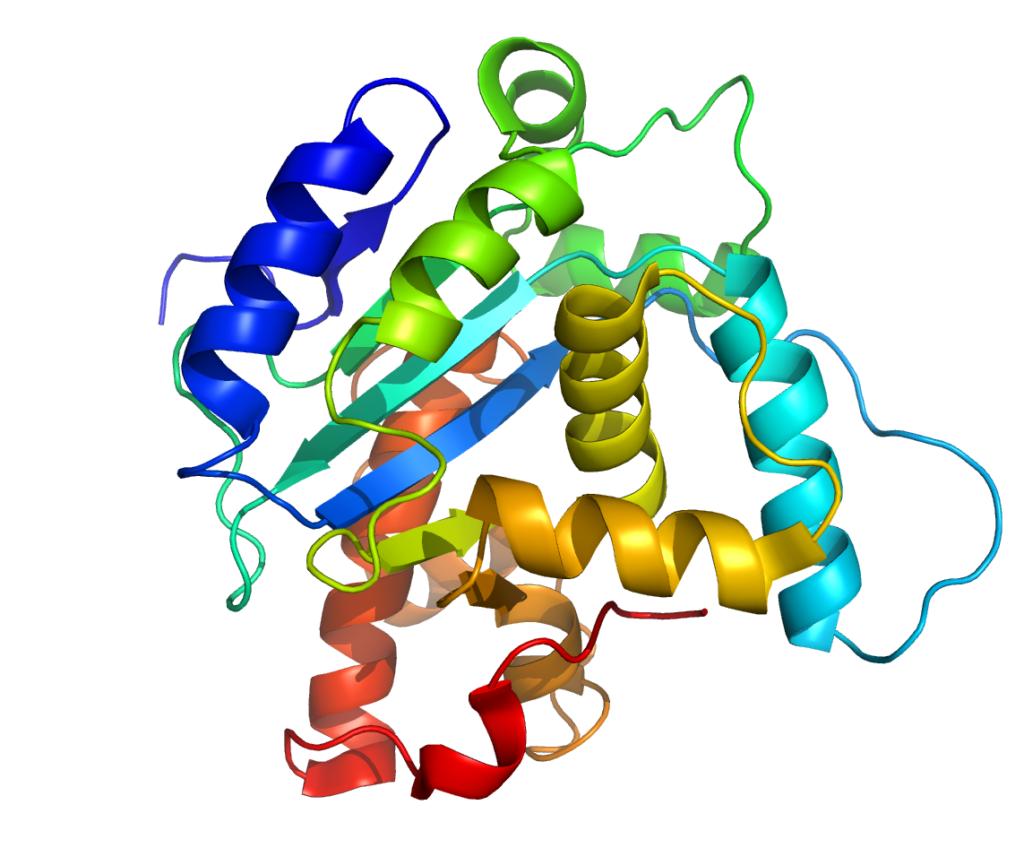 Protein is a molecule made up of amino acids, 20 amino acids arranged themself in different ways to give different structures and different functions of proteins. Amino acids are linked with peptide bonds with each other and give rise to a 3D structure.
Protein is a molecule made up of amino acids, 20 amino acids arranged themself in different ways to give different structures and different functions of proteins. Amino acids are linked with peptide bonds with each other and give rise to a 3D structure.
Role play by the Protein :
- Some proteins are enzymes that catalyse biological reactions.
- They are responsible for the formation of hormones.
- Antibodies are the specialised proteins that protect us from foreign particles.
- Protein molecules also facilitate the transportation of nutrients.
- Protein also balances the pH of the blood.
To perform these above given functions, proteins need different types of structures.
Protein Structure Change: Why is the Stuff of Concern?
As we know the shape of the protein decides its work, but predicting the shape of the protein is a big problem. For making a drug new or old you first need to know the structure of the protein. Predicting the structure of a protein with the help of the amino acid chain is a difficult task for scientists.
Correlating Issue
The structure of protein does not correlate with the sequence of the amino acids. The issue is that some small changes in amino acids, and sequences change the whole structure of the protein but some amino acids have similar characteristics so little mutation does not affect the structure. Predicting which mutation affects or not is a big challenge for a scientist.
Too flexible Polypeptide Chain
The String of amino acids is so flexible that it can rotate in multiple ways. Understanding the rotation of each amino acid in a chain is too difficult for scientists.
Scientists use some laboratory techniques like X-ray crystallography and cryo-electron microscopy to determine the structure of the protein but those techniques are not for all proteins and do not give accurate results.
AI Solve the Proteins Structure Issue
AI has resolved the biggest problem in biology by predicting how a linear amino acid chain protein curls up to a three-dimensional structure. Deep mind Artificial Intelligence system, Alpha fold this year in CASP predicted the structure of the given amino acids chain accurately and speedily. The alpha fold is able to predict the structure of a protein that a string of amino acids will take. Previously used lab technologies take too much time and effort to detect the structure of proteins, these are also very costly, but Alpha fold makes the work easy and effortless.
So AI proved a boon for scientists as it decoded the 50 years of protein structure problem.
Check Point
1. Proteins are also called _______
- Bodybuilding food
- Energy giving
- Roughage
2. Proteins are made up of __________
- Amino acids
- Citric Acids
- Acetic Acids
3. Which organelles are responsible for the production of the protein ?
- Ribosome
- Chloroplast
- Golgi apparatus
4. Technology that is used to predict the structure of the protein ?
- MRI
- Gel Electrophoresis
- X-ray crystallography
In cartoons or movies, you have seen magic of producing something from thin air, a doctor who can correct every illness, special medicines, etc. Today biological inventions look like a sci-fi movie as they seem to not be possible. Many countries are continuously trying to strengthen the healthcare system of the world by doing new inventions. Let us ride some biological invention done for the betterment of humankind.
Gene Editing
Editing of the DNA from the genome of living organisms is called gene engineering or gene editing.
CRISPR-Cas9 is a well-known approach to genome editing. CRISPR-Cas9 is a cheaper, faster, and more efficient system than other genome editing systems. Genome editing is helpful in the treatment and prevention of diseases. CRISPR is a molecular scissor that makes gene editing easier, this opens new doors in the genetic engineering field.
|
|
Plastomics, a US-based startup develops an advanced system for chloroplast editing. |
|
2. |
An Irish-based startup PLANTeDIT developing, genome-edited non-transgenic plant products. |
Precision Medicine
As the gene editing cost decreases, the use of gene editing techniques becomes frequent in clinical practice, it opens the door for the making of specific medicine for an individual which is known as precision medicine. Scientists invented a drug that is suitable for the population, but now precision medicine is becoming popular.
Precision medicine allows the physician to determine which medicine or treatment works better for a particular patient.
|
|
iLoF, a British startup develops a patent-centric drug platform. The platform developed by iLoF is non-invasive and rapid which facilitates the production of personalised and precise therapy. |
|
2. |
US-based startup Dyno Therapeutics offers gene therapy based on Artificial Intelligence. |
Biomanufacturing
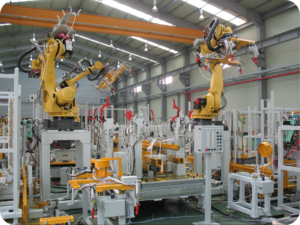
Biomanufacturing involves the production of goods through plants, animals, cells, tissue, microorganisms, or living systems. Proteins, nucleic acids, or enzymes are produced through the living system which are used to make the final drug or used in the food industry. Many countries are trying to make this process easy and cheaper, so that they can utilise the process as much as possible.
|
1. |
British-based startup Deep Branch converts carbon dioxide to useful chemicals. |
|
2. |
Protena is a US-based startup that works on insect-based production. |
Artificial Meat
To reduce the load of meat eaters on living organisms, scientists are trying to make the best artificial meat. Artificial meat is grown in the laboratory, to make artificial meat fat cells or tissue grown in the lab for meat eaters and vegans. Artificial meat is the solution for both humans and animals.
Many companies are working to deliver artificial meat to the market and in the future hopefully, artificial meat will replace traditional meat.
|
|
A Germany-based company Bluu Seafood is working on lab-grown seafood. |
|
2. |
Netherland-based company Mosa Meat is a company that successfully produced a few edible hamburger patties in a laboratory. |
Bioprinting
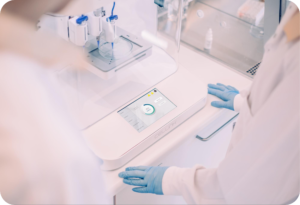
Bioprinting is similar to 3-D printing. Unlike 3-D printers, bioprinter works with biomaterials and cells to create organ-like structures. Bioprinting is also helpful in the cosmetic industry also. Bioprinting is used to heal wounds, produce artificial organs, develop drugs, and fabricate the skin.
The best thing about the product made by bioprinting is that the product mimics the structure and function of the natural organ or part.
|
|
Cellink is a US-based company that works on developing both biomaterials and bioprinters. |
|
2. |
Cyfuse Biomedical is a Japanese company that creates a 3-D bioprinter that is free from the scaffold. |
COVID Vaccine
Everyone is familiar with coronavirus as everyone’s life got affected by the corona pandemic. We are all also familiar with the fact that at the time of the corona pandemic, we had no solution, but our doctors and scientists invented the solution in one year of the corona. The invention of the new vaccine in a year was not an easy task as the pandemic is new, but still, scientists develop the coronavirus which is becoming a boon for human life.
|
|
Sputnik vaccine developed by Russia against COVID-19 |
|
2. |
Covaxin (inactivated virus vaccine) is produced by Bharat Biotech, an Indian company. |
|
3. |
Novavax vaccine is developed by the US to prevent COVID-19. |
Check Point
- From which of the following organs can be made by using cells or tissue?
- Precision medicine
- CRISPR
- Bio printing
2. Vaccine developed by India ______.
- Novavax
- Sputnik
- Covaxin
3. Full form of DNA ______.
- Deoxyribonucleic acid
- Deribonucleic acid
- Deoxynucleic acid
4. Which of the following companies work in the production of artificial meat?
- Cellink
- Bluu Seafood
- Protena
How Climate Change Affects Plants
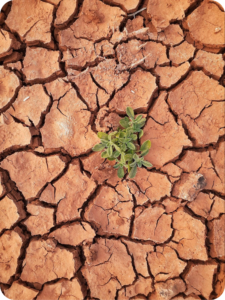
Have you seen a cartoon or fictional movie in which a person with the help of a remote control changes the weather? Is it possible in reality to change the weather with the help of a remote? Climate change is one of the most famous topics in the world. There are lots of meetings by the governments of different countries to find a solution, but why is climate change a topic of concern?
First, let’s understand climate change. In simple language, climate change refers to long-term changes in weather patterns and temperature due to natural reasons or human activities, but nowadays it has become a concern, as human activities cause instability in climate change. Uneven heating of the earth, global warming, or uneven rainfall all are the results of human activities.
Quiz on Green Friends
- Kitchen of plants _______.
- The part that anchors soil and stem ______.
- Soil provides_____ to plants.
Humans are aware of the problems they are facing but do you know what problems our green friends are facing?
Let’s see the problems plants are facing.
Effect of Climate Change on Plants
Sunlight, Carbon-dioxide and water are the three major ingredients on which our green friends depend, unusual climate change disturbs the balance of these components which results in the harsh life of our green friends.
Water
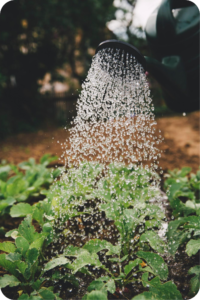
The water table is totally disturbed, in some places plants are growing in the surrounding area where less amount of water is present due to drought conditions, or in some places plants died due to floods. Climate change has disturbed the water cycle.
Rise in temperature

A rise in temperature results in a high rate of transpiration that causes death of plants due to dryness. Most of the plants bloom in warmer conditions, and changes in the bloom period causes confusion in flowers and pollinators.
More pests are observed in warmer season extension in warmer seasons resulting in more exposure of plants to pests.
Nutrients Imbalance
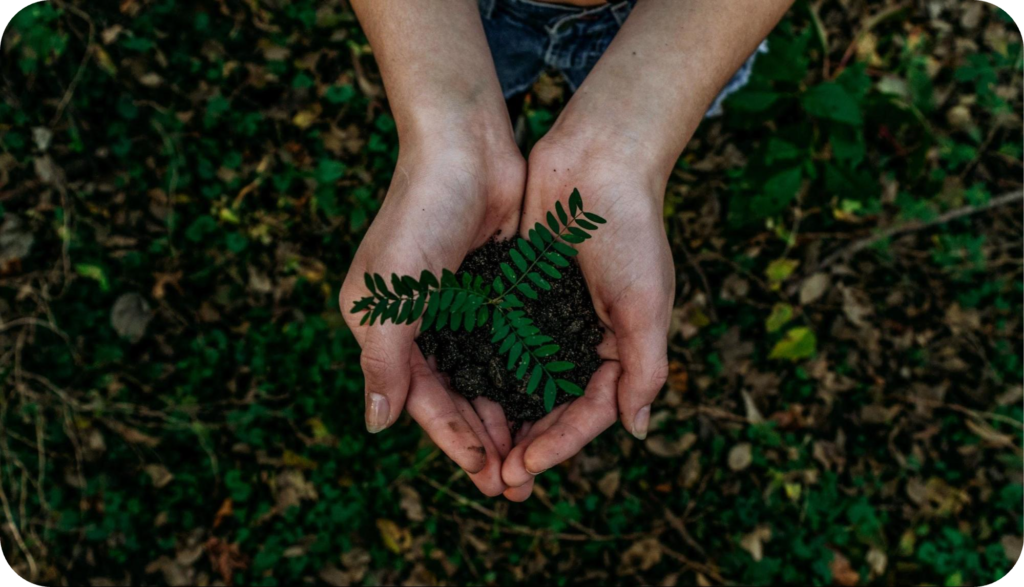
Nitrogen is the most abundant gas in the atmosphere, and plants need it to grow. Change in climate results in an imbalance of the nitrogen cycle, which causes hindrance in the healthy growth of plants.
Plants that Affected More
Plant | Country (highest production) |
Wheat | China |
Peaches | China |
Coffee | Brazil |
Corn | United State |
Wheat
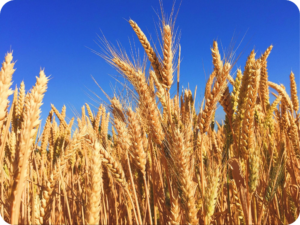
Wheat is the primary source of bread which is popular in the world, exposure to heat waves for a longer period results in less wheat productivity. 8 percent loss in wheat productivity upon 1 percent increase in temperature can be observed in India.
Peaches
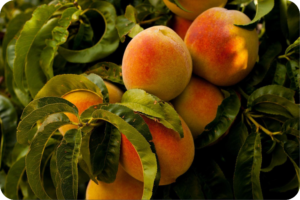
Georgia and California are important sources of peaches, and trees of peaches bloom in chilling conditions, if a suitable amount of temperature is not provided then a decrease in the production of peaches can be observed. Due to the increase in temperature, farmers in Georgia and California face problems in growing peaches.
Coffee
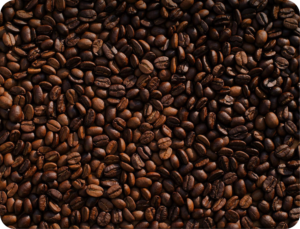
Brazil is popular for coffee. Coffee grows in hot temperatures, but it can not withstand extreme heat, but due to the increase in temperature, many areas in Brazil now are not suitable for growing Coffee. Other coffee-growing countries are also facing a decrease in the productivity of coffee.
Corn
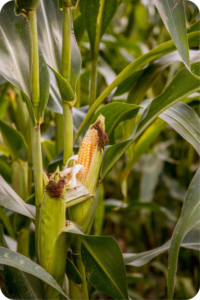
The crop of corn requires frequent rainfall, but due to disturbances in the climate, no or more rainfall is observed which destroys the corn field. Many reports are suggesting that corn-growing countries will face a high loss in corn production.
Climate change is the result of human activities but it is dangerous for all organisms living on the earth. It is believed humans are the smartest among all organisms, but their activities show that humans are the most dangerous for the earth.
Checkpoint
- Climate change only affects human beings.
- True
- False
2. Which country has the highest production of coffee?
- Brazil
- China
- United State
- India
3. Which is the most abundant gas in the atmosphere.
- Nitrogen
- Oxygen
- Neon
- Carbon dioxide
4. Select the effect of Climate Change on Plants.
- Rise in temperature
- Nutrient Imbalance
- Disturbance in the water cycle
- All of these
Small things affect our life equally as big things. Small experiences make a road for bigger achievements like the crawling of a baby is the first step toward acquiring the skill of running. In nature, even small organisms hold significance, much like how our minor experiences contribute to the richness of our lives. Climate change is causing a threat to many species, putting them at risk of becoming endangered or even extinct.
Tiny but Valuable
Many studies indicate that half of the agricultural insect population is decreasing due to climate change. In the UK butterflies, since mid-1970 have fallen to 77%, and in Costa Rica flooding resulted in a decline in the population of butterflies and moths. But how can the disappearance of insects affect the huge world?
No insects = Reduced pollination = Obstacle in Reproduction of plants = less food production = can lead to a shortage of food for humans.
Insects, like bees, help plants make food by spreading pollen. If insects disappear, there won’t be enough food for us, and it will directly affect humans. Some insects are more active in warmer conditions but for some rise in temperature is not favourable. Natural Predators are present for every pest, most insect enemies are sensitive to high temperatures, and the pest population is comfortable with the rise in temperature in this condition there is no control over the prey’s population.
Link between Food Chain & Climate Change
We all depend on each other, even human life also depends on insects. Have you heard that the big organisms eat smaller or the powerful ones eat the smaller organisms? Let’s see one example;
 →
→  →
→ 
Wheat is a producer Goat is a herbivorous Lion is a carnivorous
Wheat is eaten by goat and a goat is eaten by a lion.
The above-given images depict a food chain. The food chain means a series of events in which one organism eats another. The food chain starts with the producer, in the terrestrial ecosystem green plants are producers, and in the aquatic ecosystem producers are algae and phytoplankton. Herbivorous meat producers acquire the second position in the food chain and the later stages are acquired by the carnivores.
Disturbance in the population of any level of the food chain disturbs the whole food chain.
Many studies claim that the food chain will be totally disturbed by climate change, in some species the effect of climate change is observable in the present also. The table below indicates how the different organisms in different parts of the world face problems due to climate change.
Problem faced by | Problem due to Climate Change |
 | Shorter time period of sea ice coverage in the Arctic region due to the high rise of temperature creates problems for the polar bear, as they hunt fish while standing or walking upon the sea ice coverage. |
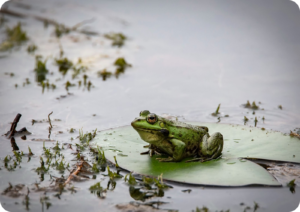 | Reduced rainfall creates problems in frog reproduction as they depend on water for breeding. |
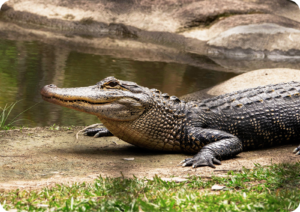 | In Latin America, a rise in temperature results in an increase in fungal growth, which causes diseases in amphibians. |
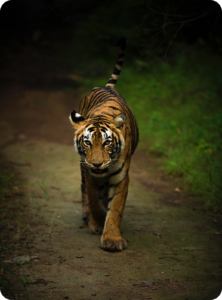 | In Mangrove forests (Asia)increase in sea level results in the loss of forest habitat which can result in the disappearance of tigers. |
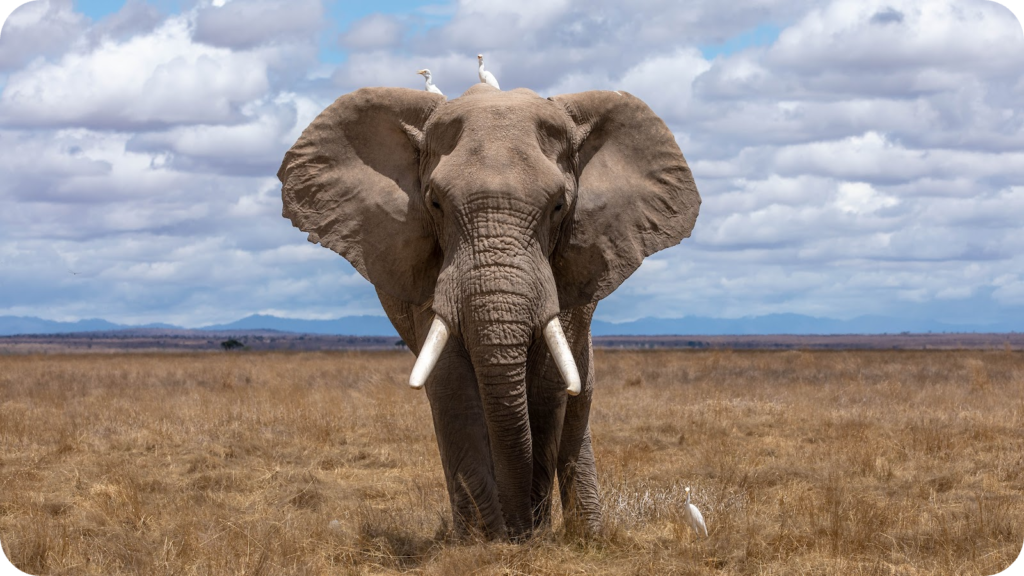 | In Africa, climate change causes drought which creates harsh conditions for elephants in Africa. |
 | Reports indicate by 2050 Australia’s Great Barrier Reef due to climate change may reduce by up to ninety-five percent(95%). |
 | In the Alps mountains many species of plant have disappeared, reports suggested that this is due to changes in the climate of the Alps. |
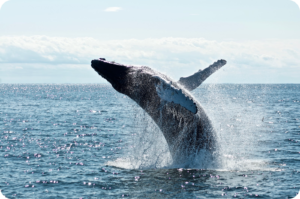 | In North America, climate resulted in a decrease in the population of plankton that are the primary source of food for North Atlantic right whales, this causes a reduction in the number of whales. |
 | Turtle embryo sex is determined by the temperature, a rise in temperature results in an increase in the number of female turtles in the Pacific region. |
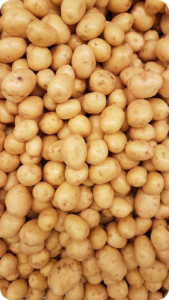 | Within fifty years, one-fourth of wild potato species will die out due to climate change. Due to climate change staple food crops are also suffering. |
Climate change is directly related to the disturbance in the food chain. Change in the distribution of organisms in their habitat, shift in reproduction timing, extinction of organisms, and shift in the time period of the growing season of plants are some basic consequences of climate change.
Check Point
- Select the producer from the below-given options.
- Zooplanktons
- Algae
- Both of them
2. Which of the following is an example of the aquatic ecosystem?
- Forest
- Desert
- Pond
3. _________ is an example of carnivores.
- Lion
- Goat
- Cow
4. An aquatic ecosystem is not affected by climate change.
- True
- False
No one can disagree that most of our lives are dependent on technology. From waking up to sleeping, every moment is with technology. Technology makes our life comfortable and easy, but as usual, everything has its own advantages and disadvantages, so technology also has its own disadvantages.

Fun Check
- How technology is helpful for you?
- Write three incidents in your life where technology is not helpful for you.
With the help of technology, many researchers predicted how humans will look after 10,000 years. According to researchers, due to the continuous use of smartphones, laptops, computers and other devices, humans will evolve some features which are not present in humans now. Let’s discuss these features in detail :
Back with a Hunch

Humans evolve a hunchback due to continuously working on computers and bending their necks to use the smartphone. Even today most people suffer from back pain due to the extensive use of computers and smartphones. Doctors also advised checking the sitting posture while using technology.
Text Claw

The biggest assumption about the change is the concept of the text claw. Many researchers predicted that continuous scrolling in the smartphone result can result in the evolution of the claw-shaped hand. Maybe for someone this change is useful but this can lead to many problems as it causes pain in joints.
Phone Elbow

The one common thing in everyone’s hands is the smartphone, even toddlers become habitual with smartphones and continuously holding a smartphone causes strain in certain points of the elbow which cause the evolution of a 90-degree elbow or phone elbow in the coming thousand years.
Second Eyelid

We all know that the radiation from smartphones, computers, and laptops badly affects our eyesight. It is assumed that maybe in the future, to protect our eyes, double eyelids will be evolved in humans.
Smaller Brain
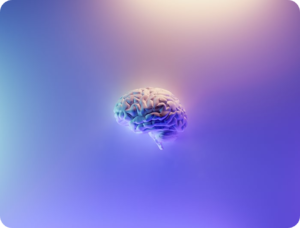
Previously humans could learn the phone number of relatives, friends, but as technology develops humans depend on the smartphone and lose the ability to retain phone numbers. As we depend on technology for daily life calculations, predictions, and other information our brain capacity will decrease, so there are many researchers which suggest that in the future human brain capacity will be lower as compared to now.
Mental Health Issues

Future humans will face more depression and anxiety issues as human mental capacity will decrease in future. In the future technological advances which result in a world fortified with technology which results in mental health issues.
Superhuman
One assumption about the future human is that humans will be able to increase their sense ability by blending technology with their natural senses. For example, to increase sight, future humans will use 3-D printed Cornea, bionic eyes, etc. The human race is expecting that in the future humans become superhuman which we all are seeing in fiction movies.
Check Point
- The features humans can develop in the future due to continuous exposure to blue light?
- Double eyebrow
- Double eyelid
- Triple eye
2. The other name of the phone elbow is ______.
- 80-degree elbow
- 90-degree elbow
- 0-degree elbow
3. A problem that we face while using smartphones for a long time is _____.
- Pain in eyes
- Stomach pain
- Pain in legs
4. Technology which we use in schools for the easy teaching-learning process is _____.
- Smartboard
- Smartphone
- Tablet
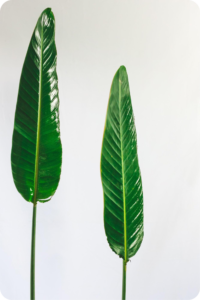
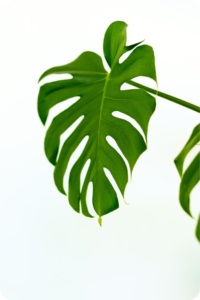
When coloured television was not invented, we were only able to see movies, dramas, and cartoons only in two colours; white and black after the invention of colour television we are able to see movies, dramas, and cartoons in diverse colours. Diversity in things makes our life more interesting and adventurous. Not only humans are able to invent diverse things, but nature also loves diversity. Nature creates diverse organisms which beautify nature. To observe nature’s diversity observe the plants in your surrounding and answer the below-given questions;
Are all leaves the same shape?
Are all leaves the same size?
Name the shape of the leaves you observe.
Variety in Shapes of Leaves
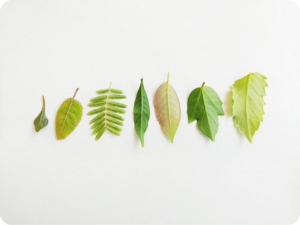
S.No | Shapes of Leaves | Example |
1. | Oval | China rose |
2. | Ellipse-shaped | Guava |
3. | Rectangular | Banana |
4. | Heart-shaped | Betel |
5. | Needle-shaped | Pine |
6. | Kidney-shaped | Indian Pennywort |
Above table shows various shapes of leaves, not only shapes but leaves have various sizes and types of edges. There are some factors on which shapes, sizes, and edges depend. Let’s discuss some important factors.
Sunlight

Leaves that receive a high amount of sunlight tend to be smaller in size, reducing the sunlight-absorptive surface, to prevent overheating, as too much heat can result in overheating and have complex edges or lobes which help to spread the sunlight. Shade lover leaves of leaves that are not exposed to too much sunlight tend to be larger in shape to increase the sunlight-absorptive surface.
Needle-shaped leaves also absorb a low amount of sunlight as they minimise their surface.
Water
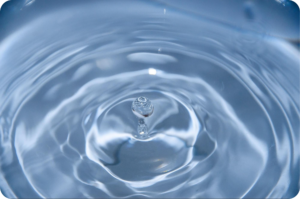
In hilly mountains, heavy rainfall, and snow can damage leaves easily by covering their surface which prevents the leaves from performing photosynthesis, so trees in hilly mountains are needle-shaped, so snow and rain water slide off easily and are not stuck on their surfaces.
Have you visited hilly regions in your holidays? If yes, you have seen trees with cone-like structures hanging on their branches. Trees with cones are called conifers found in hilly regions. Fir, Spruce, Cedar, Pine, etc. are conifers that have needle-like leaves.
Desert plants like cacti are quite popular and you are familiar with the appearance of the cacti.
What is the colour of the cacti leaves?
What is the colour of the cacti stem?
In cacti, leaves are modified into small spines to prevent the loss of water due to transpiration as there is a lack of water in the cacti surrounding. In cacti, photosynthesis is performed by the stem which has chlorophyll and is green in colour.
Wind and Temperature

Have you seen a group of penguins living in icy climates on television, newspaper, or any other place? They all tend to live in a group, to protect themself from the icy weather. Same as penguin leaves in a colder region tend to grow closer to each other to prevent heat loss. Places, where high wind can be observed, have trees with curled leaves and leaves with holes, so that can withstand windier places.
Differences in shapes, sizes, and edges of leaves make possible the existence of the trees. Variety in leaves beautifies the trees as well as protects the trees from unfavourable conditions.
Checkpoint
- Select the plant which has a needle-like shape.
- Pine tree
- Mango tree
- Banyan tree
2. Trees that have cones are called _______.
- Deciduous trees
- Evergreen trees
- Conifers
3. Do cacti have which type of leaves are found?
- modified stems
- needle-like green leaves
- round oval shaped
4. Betel has _____-shaped leaves.
- ellipse
- oval
- heart
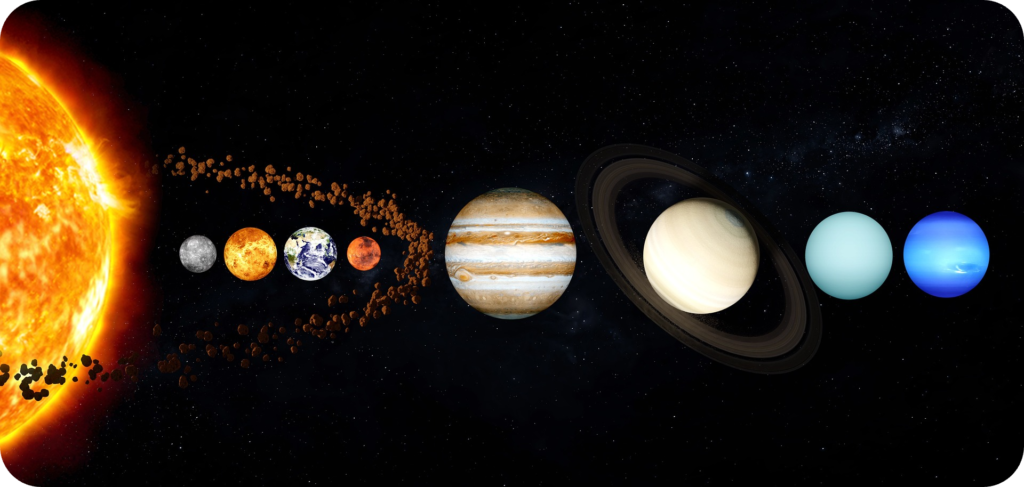
Humans are rational animals that result in curiosity in the human mind. Curiosity is the key for humans to know the universe. In earlier times humans observed and recorded the movement in the sky. With the help of keen observation, humans without telescopes note down many important astrological events and celestial objects after the invention of telescopes, spacecraft, and other advanced space technology.
Now we have more advanced technology than in earlier times, which means we can explore more.
Explored Planet: Spacecraft
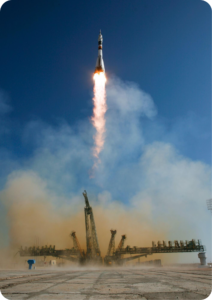
A machine or vehicle made for travelling above Earth’s lower atmosphere or outer space without or with a crew is referred to as spacecraft. Space probes, satellites, and human-powered spacecraft are examples of spacecraft. It is used for various purposes as;
- for meteorology
- for communication
- for earth observation
- for planetary exploration
- for human transportation in space.
Not only around the earth but humans have sent spacecraft to other planets also. Sputnik 1 is a famous spacecraft that shows the glory of humanity in space as it was the first spacecraft launched by the Soviet Union on 4, October 1957 to revolve around the Earth’s orbit; later humans launched many spacecraft into outer space.
Mercury
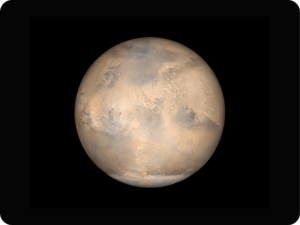
Mercury is the closest planet to the sun, so for humans, it is complicated to do any mercury mission, but the curiosity and hard work of humans makes it possible to send the first spacecraft Mariner 10 to Mercury and observe and study Mercury.
Mariner 10 was launched on 3, November 1973 by NASA, it was a flyby spacecraft. It was the first spacecraft that used the gravity of one planet on another planet. It also explored the planet, Venus.
The other spacecraft which targets mercury is:
Messenger, launched by NASA on 3 August 2004. It was the first spacecraft to orbit the mercury.
BepiColombo is a flyby spacecraft launched by European and Japanese space organisations in October 2018 and it will start orbiting Mercury in 2025.
Venus
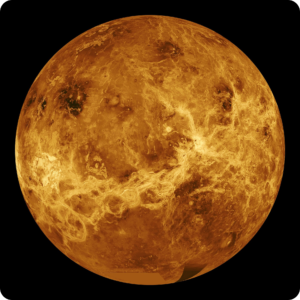
The first successful spacecraft on Venus was Mariner 2, on 14 December 1962, it first passed Venus. It gave the information that Venus is a global greenhouse, it revealed information about Venus’s atmosphere which could be helpful to resolve issues of Earth’s atmosphere.
The other successful spacecraft that reached Venus is given below:
Spacecraft | Organisation | Type |
Venera 4 | Launched by USSR | Atmospheric probe |
Mariner 5 | Launched by NASA | Flyby |
Venera 5 | Launched by USSR | Atmospheric probe |
Venera 6 | Launched by USSR | Atmospheric probe |
Venera 7 was the first spacecraft that successfully landed on Venus on 15, December 1970, it also was the first spacecraft to land on another planet. After Venera 7, Venera 8, Venera 9, and Venera 10 also successfully landed on Venus
Mars
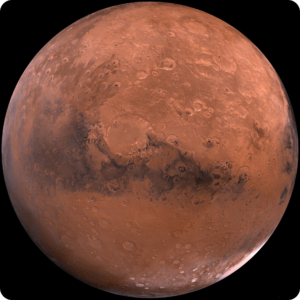
For ages humans have been attracted to Mars as it is similar to Earth. Mariners 4,6 and 7 were the successful flyby spacecraft launched by NASA. The first successful flyby spacecraft was Mariner 4. Mariner 9 and Viking 1 and 2 were successful spacecraft that orbited mercury. Viking 1 and 2 also successfully landed on Mars.
Jupiter
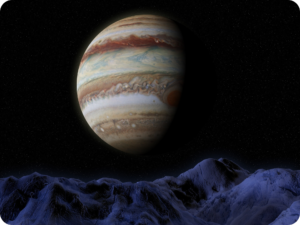
Pioneer 10 was the first spacecraft to visit Jupiter in 1973, in 1974 Pioneer 11 followed it. Jupiter’s magnetosphere was discovered by Pioneer 10 and 11. Jupiter’s moons and rings were studied by the Voyager 1 and Voyager 2 spacecraft which visited Jupiter in 1979.
Spacecraft | Organisation | Type |
Galileo Orbited | Launched by NASA and West Germany | Orbiter |
New Horizon | Launched by NASA | Flyby |
Juno | Launched by NASA | orbiter |
Juno was launched in August 2011 to enter the orbit of Jupiter, it entered the orbit on 5, July 2016. Its aim is to know about Jupiter’s origin and formation, to find the quantity of water in Jupiter’s atmosphere, etc. The Juno mission ended in July 2021. It was the first spacecraft that was able to go deep below the dense gas atmosphere of Jupiter.
Saturn
Pioneer 11, Voyager 1, and Voyager 2 previously visited Jupiter and also visited Saturn.
In 1977 Casini spacecraft was launched and arrived in orbit of Saturn in 2004, it is the first spacecraft to orbit Saturn. It provided images and data of the whole system of Saturn. Cassini orbiter released the Huygens probe. Casini discovered unknown G and E rings of Saturn.
Huygens visited Saturn’s moon Titan on 14, January 2005.
Uranus & Neptune
Uranus Neptune
As Uranus is the second farthest planet and Neptune is the farthest planet so for a human, it is difficult to send as many spacecraft as they sent to a closer planet. Only one spacecraft has been launched to Uranus and Neptune. Voyager 2 visited Jupiter, Saturn also visited Uranus on 24 January 1986 and Neptune on 25 August 1989. Many further missions are planned to explore Uranus in the future.
Check Point
- Which is known as the red planet?
- Mars
- Jupiter
- Earth
- Venus
2. Which is known as the evening star?
- Mars
- Jupiter
- Earth
- Venus
3. On which planet spacecraft were landed?
- Jupiter
- Neptune
- Uranus
- Mars
4. Phobos is a natural satellite of ________.
- Neptune
- Mars
- Venus
- Jupiter
Fun Experiments
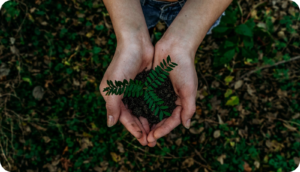
This summer let’s enjoy plants. Here are some wow experiments which can be easily done at home. Enrich your kids’ knowledge with the help of these experiments.
Plants are important to us but do you know what things are important to plants? What do they need to make their food? Why are they so important to us? How do they grow?
Let’s find these answers with the below suggested easy and simple experiments
Sun Kiss for Plants

Material Required
- 2 plastic cup
- Soil
- Gram seeds
- Water
Process
- Set the soil to both cups and add the seeds to both cups.
- Put one cup in a lighted place and another in a dark place.
- Regularly add a drop of water to both cups.
Result
Seeds in a cup placed in a dark place do not show as much growth as seeds in a cup placed in a lighted place show. After 2 weeks the cup in a lighted place shows small growth of green leaves while in a dark cup, no growth takes place.
Explanation
For the germination of seed and growth of the plant warmth, minerals, water, and sunlight requirements. A seed placed in a dark place does not get a sufficient amount of light which results in bad growth of seeds, at last, the seed stops further growth.
Mother of Oxygen
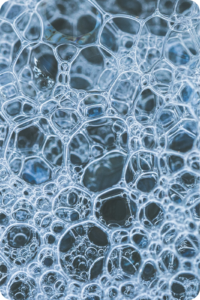
Material Required
- Water
- Clear glass
- Leaf
- Lighted place
Process
- Fill the glass with water and place a green leaf above the water.
- Put the glass in a sunny place.
- After an hour observe the glass and note down what you observe.
Result
- After an hour you will observe tiny bubbles around the leaf. If you are not able to see then you can use the lens to see the bubbles.
Explanation
Leaves produce oxygen during the process of photosynthesis, the bubbles around the leaf are oxygen bubbles which produce during the photosynthesis process.
Let’s Change the Flower Color

Material Required
- 3 cups or beaker
- 3 white flower
- Colourful ink or food colouring
Process
- Fill the cup or beaker with water
- Add 12-15 drops of food colour or colourful ink in a cup or beaker.
- Put each white flower in each cup or beaker.
- Check the flowers continuously after every 2 hours.
Result
After some time you will see a change in the colour of the flowers. The flowers look the same as the colour of the water in which they are put.
Explanation
The Stem of the flower has a vascular bundle; xylem and phloem. Xylem transports the water and minerals, phloem transfers the food. The colour water in the beaker transports through the stem to the flower, this results in a change of colour.
Air as Friend of Seeds

Material Required
- 2 cups or beakers
- Take some gram seeds
- Water
- Soil
Process
- Fill half of one cup or beaker with water and add soil and little water to another cup or beaker.
- Put three-four grams of seeds in each cup or beaker.
- Put the cups or beakers in the sun-lighted place.
- Observe the cup or beaker after 1-2 weeks.
Result
After a week seeds on both cups or beakers had sprouted but the growth in the soil cup or beaker is more than the other. In the second or third week a beaker filled with water does not show growth but you will observe the growth in another cup or beaker.
Explanation
The seed also needs air to germinate or sprout or become a plant. A seed in a cup or beaker filled with water does not get sufficient air as the seed is thoroughly surrounded by water. Seeds in a soil cup or beaker get sufficient air for growth as air is captured in the gap of the soil.
Which Liquid is Good for a Plant
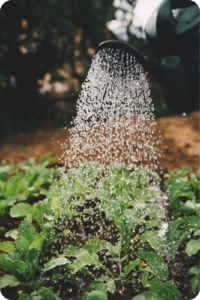
Material Required
- 4 beakers or cup
- Soil
- Saltwater
- Vinegar
- Sugar water
- Plain water
Process
- Add soil in all beakers or cups
- Label the beakers as 1,2,3 and 4.
- Add gram seeds to all beakers.
- Add a different small amount of liquids daily in the beaker according to the below-given instructions:
- 1=Vinegar
- 2=Saltwater
- 3=Sugarwater
- 4=Plain water
- Then place the beakers in a sun lit place and add a small number of liquids to moisten the soil for a week.
Result
Observation after a week
- Vinegar Beaker: The presence of an off-white-coloured layer above the soil, no seeds had begun to sprout.
- Saltwater: No seed had started to sprout.
- Sugarwater: Some seeds had begun to sprout.
- Plain water: All the seeds had begun to sprout and show better growth than others.
Explanation
Plain water supports the growth of the seeds as it provides an alkaline medium for the growth of the seeds. Sugar water also supports the growth of the seeds, but not as much plain water. Saltwater and vinegar do not provide the right alkaline medium therefore no seed sprouts in these solutions.
Colour of Leaf
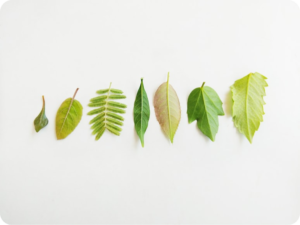
Material Required
- Leaves
- Coffee filter
- Large Bowl
- Hot water
- Alcohol
Process
- Collect 4-6 different types of leaves for the experiment.
- Apply the alcohol on the surface of each leaf.
- Fill the water in each beaker and put the beakers on a gas or stove for boiling.
- Place the leaves in different beakers for a few minutes.
- Add 10-12 drops of alcohol in each beaker while boiling.
- After boiling wait for a few minutes, you will see the liquid in which the leaves are boiled has changed its colour.
- Now apply the liquid from each beaker to different coffee filter paper.
- Wait for an hour to see the results in coffee filter papers.
Result
After boiling you will see the liquid in which the leaves are boiled has changed its colour. The liquid looks green in colour. In coffee filter paper you will see green colour and in some, you will observe a red, yellow, or orange colour.
Explanation
The green colour of leaves is due to the presence of chlorophyll pigment, but not only chlorophyll pigment some more pigments are also present in plants that provide red, yellow, or orange colour in leaves, but in small amounts, that’s why most of the leaves look green in colour.
Check Point
- Plant healthy growth depends on ________.
- Sunlight
- Water
- Soil
- All of these
2. Vinegar is _______ in nature.
- Neutral
- Acidic
- Basic
3. The colour of croton leaves is green when they fully mature.
- True
- False
4. Only chlorophyll pigment is present in plants.
- True
- False

Hiding your favourite things from your siblings or friends is something that we all do. The best thing to hide something is a place where no one can guess.
Similarly, many great people hide their work with the help of paintings, by adopting different styles of writing, or by hiding the work in stories and in poems.
Many mathematicians hide their work in poems or they use poems to convey the beauty of mathematics.
Vedic maths originated and was discovered in India with the help of some verses written in Atharvaveda.
Relationship between Maths and Poetry


Pattern: Both poems and maths use a specific pattern. Every poem follows a specific pattern like a pattern in sound, verses, symbols, etc. For example, in rhyming poems each line ends with the same sound word.
In maths also to solve each question we follow a specific pattern.
Daily Life: Both maths and poems are related to our daily life. We need maths to calculate money, to know the time, to calculate our friends, etc. without maths we can not assume our life. Similar to maths, poems are also connected with our life, poems express our emotions, poems entertain us, and poems communicate our ideas.
Formula: Pythagoras theorem, BODMAS, fraction rules, additional rules, etc are the maths formulas that we use to solve maths problems. Maths is all about formulas. Some poems also follow a particular formula like Haiku, Sonnet, Fib, etc. So we can say that both formulas have a special place.
Different Styles of Poem
Haiku: Haiku is a three-line poem, in the first and third lines five syllables are present and in the second line seven syllables are present.
Cinquain: It is a five-line poem. The no words in each word as:
1st line= 1 word, 2nd line= 2 words, 3rd line= 3 words, 4th line=4 words, 5th line=1 word.
Sonnet: It is a fourteen-line poem, the whole poem conveying the same theme or idea.
Fib: Fib poems are similar to Haiku but the Fibonacci sequence is the basis of fib poems. The first line has no syllable which means first comes silent, then in other lines syllables increase.
Fun Questions
- What is your favourite poem?
- Write the name of some famous poets.
- Compose a poem on your favourite topic, and use the specific style of writing the poem.
Mathematician as Poet

Many mathematicians believe that maths is also like a poem as maths equations try to convey facts and poems try to convey emotions and thoughts. Both are used to convey messages.
German mathematicians of the 19th century believed that the idea of maths first needed to be poetized.
Kovalevskaya was a talented mathematician who believed that a true mathematician is a poet. She believes that both mathematicians and poets require a creative spirit. Sofia Kovalevskaya was also known for her poetry, biography and novels.
Jacob Bernoulli the discovery of constant e and the person who contributed to calculus study, the main contribution of his is in probability. He was a talented mathematician of his time. Treatise on Infinite Series written by Jacob Bernoulli has some beautifully expressed verses that show his ability as a poet.
There are many mathematicians who used poems to express maths and show the link between maths and poetry.
Niccolò Tartaglia was an Italian engineer, mathematician, bookkeeper, and surveyor. Some of the books published by him are Ballistic and Epistemic Instruments, Metallurgy, etc. He discovered cubic equations which he shared with Girolamo Carnado (Italian mathematician)as a poem.
Diophantus’s Riddlepp
Diophantus of Alexandria, a Greek, was a writer of Arithmetica (A series of books). He worked on algebraic equations.
Metrodorus a greek mathematician and grammarian created a number of poems known as Diophantus’s Riddlepp which is about Diophantus. The riddles are about algebra and Diophantus.
Mathematician and poetry are interrelated with each other.
A Poem as a Tool to Learn Maths

Using poems to teach maths to students is a good idea, as it makes maths an interesting subject among students. Teaching maths with the help of poems is not only applicable to primary classes but for higher classes also we can use it. Geometry, Algebra, Figures of thoughts, and ZITO the magicians are some Math poems that we can use to teach kids different maths concepts in a fun way.
Check Point
- Maths can be taught with the help of:
- Games
- Poems
- Both of them
- In which of the following subjects do we use Maths?
- English
- Science
- Economy
- All of them
- Who invented zero?
- Aryabhata
- Pythagoras
- Archimedes
- Eucli
4. Which of the following is not a branch of maths?
- Arithmetics
- Algebra
- Statics
- Zoology
Challenges are a part of life. We all face new challenges in our life, even animals also face many challenges. We all try hard to deal with our life challenges but to deal with environmental challenges we not only need hard work, but also depend on our innate capabilities.
Some environmental challenges that we all witness;
- Change in air condition
- Change in habitat
- Change in water condition
- Change in nutrition availability
Migration from harsh conditions to favourable conditions can be one of the solutions to tackle environmental problems, but for plants, migration does not exist. Plants can not move from one place to another, they can not migrate.
Help Please!
Can you suggest some ways for plants to tackle the below given issue?
- Lack of water in soil.
- Lack of nutrition in soil.
- Lack of sunlight in the surrounding area.
- Fear of pests.
Let’s see how nature helps our green friends to tackle their issues.
Giant Water Lily
You have seen in viral pictures of babies or animals sitting on giant leaves, that giant leaves are the giant water lilies belonging to the family of water lilies. Giant water lily found in South America.
Strength of Water Lily to fight with aquatic habitat;
- The presence of stomata only on the upper side of the leaves, as the other side of the leaf, is in contact with water.
- The Stalk of the plant is flexible, which helps the stalk not get hurt by the movement of the plant.
- The Flower of the plant lily presents above the leaves, to facilitate the pollination process.
Corpse Flower
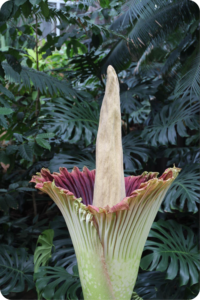
The smell of your delicious food attracts you for miles. Corpse flowers also use smell to complete its need. The corpse flower is a native plant of Indonesia. The meaty foul smell of the corpse flower attracts pollinators to deep jungles through miles. Reproduction of the corpse flower depends on the foul smell.
Stinking Corpse Lily
Like corpse flower stinking corpse lilies also use their powerful meaty smell to attract pollinators, it is the biggest flower in the world. The ability to produce attractive smells makes its existence possible in the rainforest of Indonesia.
Hammer Orchid
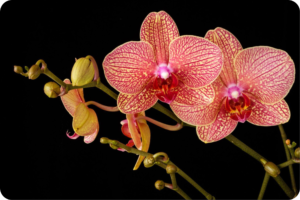
Hammer orchids adapted a special ability to pollinate easily. Hammer orchids look similar to female wasps and release pheromones to attract male wasps. Male wasps attract the hammer orchid, this results in sticking the pollen to the male wasp. With the help of its look, pollination takes place in Hammer Orchid.
Barrel Cactus
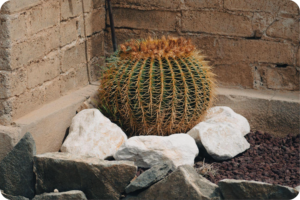
After hearing the word ‘Desert’, what type of thoughts come to your mind?
No water
Dry and hot air
Dust everywhere
Camel ride
The Barrel cactus is a desert plant found in North and South America. It looks like a ball covered with spines. The stem of the barrel cactus is rounded and covered with spines. The stem is greenish in colour and performs photosynthesis. Leaves are modified into stems as in desert sufficient water is not present.
Saguaro Cactus

It is found in the Sonoran desert and can grow up to the height of 40 feet, which is why sometimes it is confused with trees. Saguaro cactus leaves are also modified into spines to prevent the loss of water during transpiration. The green stem which performs photosynthesis is covered with a waxy coating to prevent transpiration.
Venus Flytrap
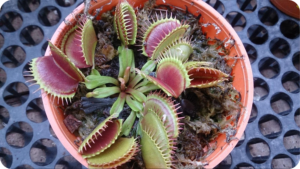
Have you ever had a dream of eating a giant monstrous plant, who wants to eat you, or seen any movie of a plant-eating a whole big animal? In reality, some plants trap small insects to get nutrition.
Venus flytrap is an insectivorous plant, it traps small insects to get the nitrogenous substance. The soil in which the venus flytrap grows contains low amounts of nitrogen substance, to complete its needs, the Venus flytrap depends on insects.
Pitcher Plant
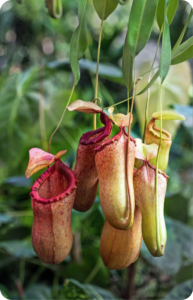
The pitcher plant is also an insectivorous plant, it modified its leaves in a lid shape to trap the insects and extract the nitrogenous substances to complete its need. To fight the lack of nitrogen in the soil, venus flytrap adapts to feed on insects.
Cape Sundew
It is also an insectivorous plant and depends on insects for its nitrogen needs. The bright, shiny substances attract everyone, even some insects also attract to simmering stuff. Cape sundew leaves are thin and strap-like, which catch simmering drops and attract insects to kill them.
Pondweed
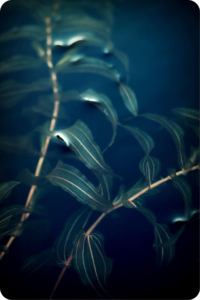
Pondweed is an underwater plant and adapted mainly to cold water. Excessive water in the surrounding area can result in the rotting of the plant, so how can pondweed live underwater? Pondweed leaves have a special coating that prevents the rotting of leaves due to water. The stem is flexible, so it does not break due to the flow of water.
Nature gifted precious power to the plant, to survive in harsh conditions, some have modified parts, some have attractive looks or smells and some have special parts to capture insects.
Check Point
- Venus flytrap has which type of unique ability?
- It has an attractive smell
- It has attractive looks
- It is an insectivorous
2. Which of them is an insectivorous plant?
- Venus flytrap
- Pondweed
- Pitcher Plant
3. Hammer Orchid looks like ______
- Female wasp
- Male wasp
- Butterfly
4. Saguaro is a _________
- Desert Plant
- Aquatic plant
- Terrestrial plant
Till now humans have discovered many mysteries of space, but discovered facts about space are just a tiny bit compared to the vastness of the entire universe. Human hunger to explore space can not be fulfilled till they do not fully explore space.
There are many future space missions to uncover the hidden mystery of space. Here are some of the significant future space exploration missions.

Future Mission: Mercury

Japan Aerospace Exploration Agency (JAXA) and European Space Agency planned together a mission called BepiColombo to discover more data about Mercury.
Features
- Mercury Planetary Orbiter (MPO), will launch on 5, Dec 2025 by the European Space Agency. MPO will be loaded with 11 instruments to collect data with more accuracy. MPO is a part of BepiColombo.
Mercury Magnetospheric Orbiter (Mio) is also a part of BepiColombo which will be launched on 5 Dec 2025 by (JAXA).
Future Mission: Venus

Many different space agencies planned various missions to Venus.
Mission | Spacecraft | Launch Date | Objective |
Shukrayaan 1 (ISRO) | Atmospheric and orbiter balloon | August 2024 | to study the atmosphere and the surface of Venus. |
DAVINCI (NASA) | Atmospheric probe | 2029 | Deep investigation of Venus’s atmosphere. |
Venera-D (Roscosmos Russia) | Lander and orbiter | 2029 | Radar-based observation on Venus. |
EnVision(ESA) | orbiter | 2031 | To perform atmospheric studies and high-resolution radar mapping. |
VERITAS(NASA) | orbiter | 2031 | Study of Venus’s tectonic geochemistry and mantle processes. |
Future Mission: Mars

Mission | Spacecraft | Launch Date | Objective |
Martian Moon Exploration (MMX) (JAXA) | 2024-2025 | orbiter | Observing the martian atmosphere and collecting the sample from the Phobos |
Mars Orbiter Mission 2 (ISRO) | 2024 | Orbiter | Study of mars orbit and ionosphere |
Tianwen 3 (By CNSA) | Sample to earth (2033) | Orbiter, lander | Collect dust and rock from mars and send them to earth. |
NASA-ESA | a sample collection mission (2020) sample retrieval mission (2026) return mission (2033) | Orbiter, lander | Collection of mars samples and return them to Earth and finding signs of life on mars. |
Future Mission: Jupiter

Mission | Spacecraft | Launch Date | Objective |
JUICE (By ESA) | Launched by 2023 | Orbiter | Planned to study three moons of Jupiter ( Ganymede, Europa, Callisto) |
Europa Clipper (By NASA) | Launched by 2024 | Orbiter | Multiple flies by Europa and orbit Jupiter |
IHP-1 (By CNSA) IHP-2 (By CNSA) | Launched by 2024 Closest approach to Jupiter (IHP-1) (2029) Closest approach to Jupiter (IHP-2) (2033) | Flyby | Flyby to Jupiter and other planets |
Tianwen-4 (By CNSA) | 2029 or 2033 | Orbiter | Jupiter orbiter and also orbit the Uranus |
Future Mission: Saturn
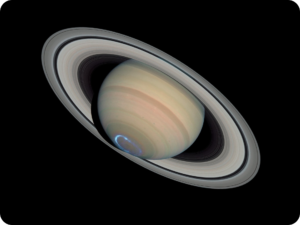
The Dragonfly spacecraft is a future mission to the Titan (moon of Saturn). The main aim of the Dragonfly spacecraft is to collect information about the microbial habitat of Titan. I will launch in 2027 and reach Titan by 2034.
Future Mission: Uranus
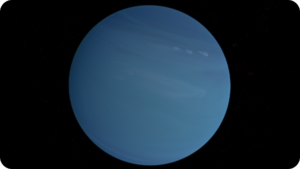
Tianwen 4
Gan De or Tainwen 4 is an interplanetary mission planned by China. The main destiny of Tianwen is Jupiter and Flyby to Uranus. It is planned to launch in 2030.
Uranus orbiter and probe
This mission is to plan the study of Uranus and its moon. The main aim of this mission is to study the interior, origin and atmosphere of Uranus, true rotation rate of Uranus, history of the Uranian rings, etc. This mission is Launched in 2031 by NASA.
Future Mission: Neptune
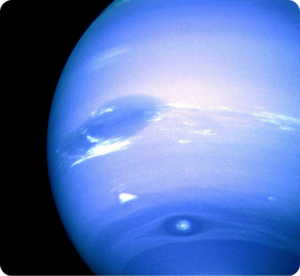
IHP-2
Interstellar Heliosphere Probe is the Chinese spacecraft probe designed to launch in May 2024. This mission involves two space probes. In 2038 the probe flyby to Neptune and Triton (Neptune’s Moon).
Checkpoint
- Titan is the moon of _______.
- Neptune
- Saturn
- Jupiter
2. Which of the following is the mission for Jupiter?
- JUNO
- Venera 7
- Mariner 10
3. JAXA is the space agency of which country _____.
- NASA
- Japan
- Russia
4. When will the Mercury Planetary Orbiter launch?
- 5 December 2025
- 6 January 2023
- 7 May 2028
